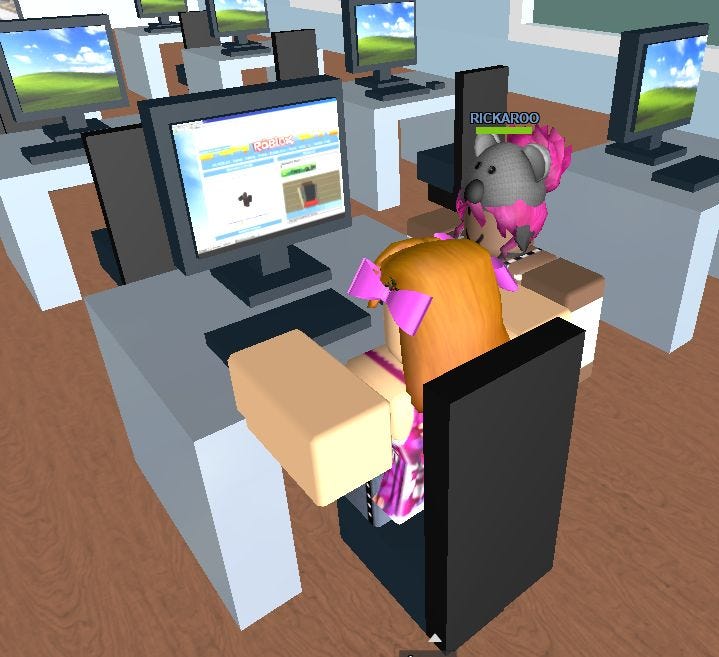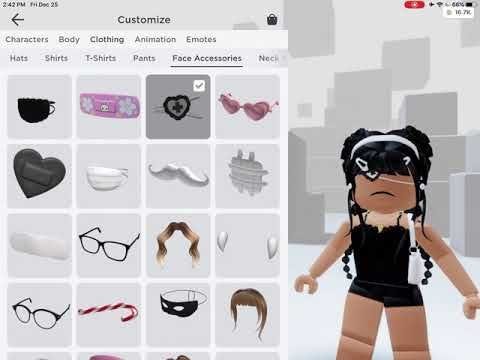What’s the deal with Roblox?
Günseli Yalcinkaya dives into Gen Z's favourite parallel universe
In the past month, I’ve been traversing the pixelated servers of Roblox in the name of research. With 78 million daily active users, the virtual hangout is a growing platform for Gen Z, who apparently spend more time on it than TikTok. I admit, I initially found this hard to believe, but after some virtual in-game sleuthing, I can now see why it’s being touted as a rising social media platform, especially among younger Gen Z users who use the platform to meet friends, join groups, exchange DMs and engage in real-time conversations via voice chat. All while collaborating with users to build multiplayer environments and launch in-game marketplaces in exchange for real $$$. Turns out, the metaverse is anything but dead – it’s thriving.

There’s a good reason why gaming platforms like Roblox are gaining traction as the new social media for a younger generation. Unlike traditional Web2 social platforms such as Instagram, which feels more like an exercise in personal branding than a genuine way to meet and connect with others, Roblox is built on user-generated content, which means that it offers total freedom to create the spaces you want to see (aka the things you want to do in the game are directly shaped by its users, not a group of bland tech execs in Silicon Valley - RIP Horizon Worlds). Between this, and the thousands of multiverses and mini-games, from the hugely popular Dress To Impress to RPGs, puzzles and pet adoption services, there’s literally something for everyone. So, it’s no wonder that time spent in gaming worlds like those hosted by Roblox is predicted to increase in the next few years, especially as trad social media grows progressively weirder and inauthentic, overtaken by armies of bots spouting AI slop to the masses.
Roblox is also real business – the game’s in-game currency Robux can be bought using real $ and allows for users to buy avatar customisations and in-game experiences, which is presumably the reason why celebrities like Charli XCX and Karlie Kloss are cashing in on the hype (Kloss even called it the “future of taste-making”). According to Roblox’s 2023 fashion report, 51% of Gen Z users said they were “very or extremely likely” to consider looking into a brand for themselves after trying on a brand’s item virtually. With over 165 billion avatar updates and 1.6 billion digital fashion items bought in 2023, it’s already a go-to for many ‘real’ fashion brands: Mango, H&M, Gucci and Versace all have stores in the virtual space, giving users the option to purchase virtual looks. In September, Roblox announced its move into e-commerce by partnering with Shopify to allow users to buy physical versions of digital goods, further underscoring the lucrative potential of these platforms.

As digital self-expression continues to become an important part of Gen Z and Alpha identity, the low barrier of entry for in-game creation has also led to users designing their own digital garments. In 2022, over 11.5 million creators designed more than 62 million clothing and accessories items. I find this particularly interesting for the trajectory of digital fashion. A semester-long course at Parsons even teaches fashion students how to build in-game garments for Roblox, which again points at the nuanced ways in which young creators see the future of fashion design, and mirrors wider industry changes, as many designers turn to 3D fashion softwares such as CLO, which allow for them to create virtual garments before translating them into the physical world.
What’s perhaps most interesting about the popularity of gaming platforms like Roblox is what they say about how younger generations see the relationship between their IRL and online selves. Returning to Roblox’s 2023 fashion report, 56% of Gen Z users said that styling their avatar was more important to them than styling themselves in the physical world. By now, this collapsing distinction is already extremely well-documented in the Discourse, but there’s no denying the internet is mutating how we see ourselves on and off-screen – and user-driven gaming will only accelerate this exponentially. This is especially true when you consider how it costs much less to stay in and play video games with your friends than go out clubbing. It begs the question: will having a swagged-out avatar be more valuable than keeping up with whatever micro-trend is being pushed to us by the TikTok algo? There’s also VR headsets like the Apple Vision Pro that are yet to filter into the mainstream, but will no doubt become increasingly accessible – it’s only a matter of time. These technologies will further enhance our relationship to VR, further breaking down the hierarchy between our avatars and meat bodies in such a way that everything is mediated through the screen – whether that’s styling IRL looks using digital doubles or wearing outfits that technically don’t exist, but rather superimposed onto photos or videos of ourselves such as those of the Institute of Digital Fashion or digital influencer Dani Loftus.
However, there’s always the risk that as brands will take advantage of the Gen Z hangout, Roblox’s unbridled creativity might begin to resemble a corporate branding exercise, a gentrified digital space filled with branded pop-ups and sponsored content – Roblox is currently amping up its advertising efforts. This has historically not gone well for platforms – in 2022, VRChat banned all user-made mods overnight, throwing the metaverse into total chaos and users review bombing the game on Steam. Throwing off the balance between user-generated and branded content could be as critical a distinction as turning Myspace into IG. The trick is to be as organic as possible, integrating brand experiences into pre-existing in-game formats. Over the coming years, we can expect to see even more brands flock to its servers as Gen Z grows older and shopping becomes more gamified, marking a shift away from trad e-commerce. AI, too, is reducing the barrier of entry for virtual garment creation, making it easier for brands to build virtual stores. Maybe this is all the same stuff we’ve seen happen across social media, only a metaverse edition. I wouldn’t be surprised if the next stage is Roblox influencers selling us sponcon, or creators selling us Roblox brainrot to max out their engagement. But only time will tell.
Thanks for reading! As always, you can catch up with us in the comments or over on IG. Otherwise, we’ll see you next week.
Words by Günseli Yalcinkaya. Cover image by @randomizt on Pinterest. Brought to you by @morning.fyi.






Great piece! And I couldn't agree more on the native integration into games. Having Charli XCX show up in Dress To Impress was a far more effective move than creating their own world.